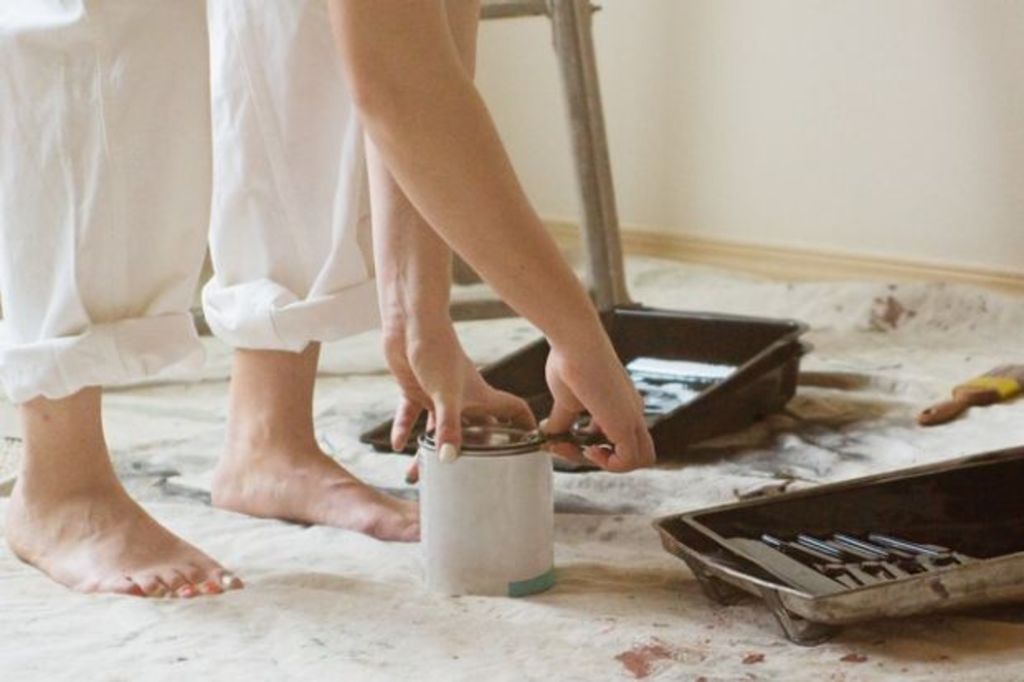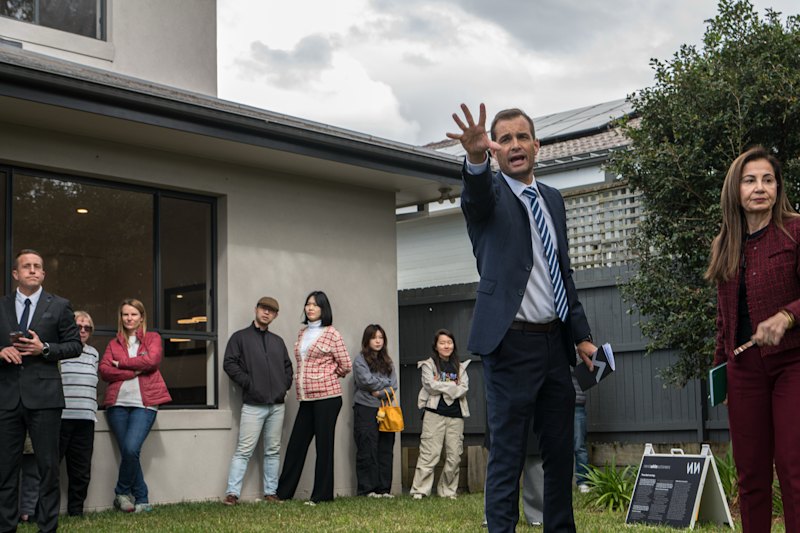To DIY or not to DIY: The jobs you really need the experts for

Australians love a bit of DIY. But when it comes to tackling most home maintenance or renovation tasks, you need more than a shiny red toolbox to get the job done. Be it laying floorboards, tiling a bathroom, fixing a leaky tap or building a deck, the cost of DIY jobs that end in disaster quickly add up. Here are four common DIY jobs you really need the experts for.
1. Patching and painting walls
Stefan Bartley, of Stefan’s Property Solutions, says one of the most common jobs he is called out to fix is to patch walls where paintings had once hung.
“I do a lot of jobs in the eastern suburbs and am often asked to redesign all the artworks and paintings. Moving them does a lot of damage to the walls and requires a bit of know-how to fix,” says Bartley, who started his high-end home handyman business assembling IKEA furniture.
“It’s so much easier to spend the money on getting something fixed properly than to DIY and create an even bigger headache. Cheap can be dear. If you value your time and your efforts are better used elsewhere then you should call someone qualified to fix it. If you don’t patch the walls properly you will be calling me anyway,” he says.
Bartley says one of the more challenging aspects of patching a wall involves getting a quality finish and blending the paint so that it matches the rest of the house.
If all your house needs is a quick lick of paint and you’re able to do the job yourself, remember to stay safe by ensuring the space you’re painting is properly ventilated, and by wearing a breathing mask.
2. Building a deck
Well-intentioned weekend warriors take note: revamping an outdoor space or even overhauling a decrepit deck without a little bit of know-how is a recipe for a DIY disaster. Dave Romberg, of Entrenched Landscape and Design, says the No.1 mistake would-be DIYers make is thinking they can build a deck in the first place. Romberg, who is based in Sydney’s south, says not having a well-thought-out design is a mistake. He adds that he is often called in to rescue a renovation after homeowners have cut too many corners and not considered basic fundamentals.
“You are not just nailing bits of timber together. You have to understand the fundamentals such as timber spans and spacing and footing size, and being able to measure correctly. You also need to know where to put the bearers and the size and spacing of the joists,” Romberg says.
“Every renovation has guidelines and you also need to know how to build to code and calculate the deck load the otherwise you can find yourself in renovation hell. It’s so much more challenging and expensive to retrofit or replace an existing deck that has been improperly built. Fixing someone else’s mistakes is never going to be economical,” he says.
 Know all the ins and outs before building a deck yourself. Photo: Stocksy
Know all the ins and outs before building a deck yourself. Photo: Stocksy
3. Fixing pipes under the sink
A braided hose is the flexible, metal mesh tubing found under the bathroom or kitchen sink. Faulty braided hoses are one of the leading causes of flooding, and they account for a high number of call-outs to Metro City Plumbing Professionals. Director Tyler Hinwood says the water damage resulting from this common plumbing emergency can be devastating.
“Safety first is my motto. If the rubber tube inside the hose gets too hot, the hose may burst and you don’t want water getting into electrical appliances such as low-lying power points and cables, as that is a major safety concern,” he says.
“I went to one house that was three-foot full of water on the top floor due to the failure of a braided hose. The whole ceiling collapsed and the bathroom fell into the living room.”
Hinwood recommends inspecting flexible braided hoses every few years to reduce the risk of water damage. If would-be DIYers spot signs of rust, kinks or unravelling during these checks, it’s time to call a plumber out to replace the hose.
“It’s not one to attempt at home as the unravelling wire is razor-sharp and they can splinter when rusted and flood your home,” Hinwood explains.
4. Gas installation
There are plenty of stories of gas installations gone wrong. Metro City Plumbing’s Tyler Hinwood says homeowners should always call on a licensed professional to install gas connections or LPG gas connections to make sure the work is guaranteed.
“We are very stringent about our gas application. We still see people attempting gas connections with flexible braided gas hoses but they don’t know how to do the correct testing, how to do pressure observations or look for a loss of pressure that would indicate a leak within the system,” says Hinwood.
Hinwood warns that from a safety perspective, a dodgy fitting can cause fires, explosions and destruction of the property. Homeowners need to get a compliance certificate from their gasfitter in order to be covered for defective gas fitting work.
“Fitting gas is not something your weekend warrior can do. Saving a few dollars and getting a gas connection wrong could lead to dire results. Call a professional who guarantees the work complies with the Australian Standard.”
 Remember safety first before handling pipes under the sink. Photo: Stocksy
Remember safety first before handling pipes under the sink. Photo: Stocksy
We recommend
We thought you might like
States
Capital Cities
Capital Cities - Rentals
Popular Areas
Allhomes
More
- © 2025, CoStar Group Inc.







